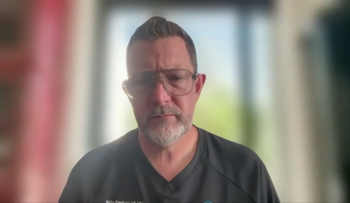Confronting America’s Smoking PandemicPart 1: From Early Evidence to Global Battle, 1939â1966Part 2: An Era of Activism, 1967â1985Part 3: Regulation, Legislation, Litigation, 1986â1999Part 4: Failures and Successes 2000â2016
References:
1. New York Times News Service. Appeals court panel overturns FDA’s regulation of tobacco. Chicago Tribune. August 15, 1998.
2. Greenhouse L. High court holds F.D.A. can’t impose rules on tobacco. New York Times. March 22, 2000.
3. Gottleib S. Supreme Court rules that FDA cannot regulate tobacco industry. BMJ. 2000;320:894.
4. [staff report]. FDA rules overturned. Smoke. April/May 2000.
5. Alexander B. Supreme Court strips FDA youth tobacco regs. Youth Today. April 1, 2000.
6. Clymer A. Legislators planning response to justices’ ruling on F.D.A. New York Times. March 24, 2000.
7. Saul S. House votes to let F.D.A. regulate tobacco. New York Times. July 31, 2008.
8. Levin M. Jury awards $145 billion in landmark tobacco case. Los Angeles Times. July 15, 2000.
9. Rosenberg C. Tobacco giant defeats suit brought by family of Bay of Pigs veteran. Miami Herald. August 18, 2015.
10. Mickle T. Tobacco companies agree to settle lawsuits in Florida federal courts. Wall Street Journal. February 25, 2015.
11. Buzzaco-Foerster J. Florida law would limit jury awards in tobacco lawsuits. Naples Daily News. March 15, 2015.
12. Kolker C. The tobacco litigation that wouldn’t die. The American Lawyer. May 25, 2015.
13. Firestone J. Tobacco lawsuits continue in state courts. The Expert Institute. August 24, 2015.
14. Berr J. In the US, one state is ground zero for tobacco suits. CBS Money Watch. September 21, 2015.
15. Fairclough G. Tobacco settlement causes a rise in makers of low-price cigarettes. Wall Street Journal. May 1, 2001.
16. Clarke L. The last beauty standing. Washington Post. November 16, 2003.
17. Dewan SK, Cardwell D. New laws effective today won’t be felt for a while. New York Times. January 1, 2003.
18. Marton J. Today in NYC history: in 2003, Mayor Bloomberg’s smoking ban kicks in. untappedcities.com. March 31, 2015.
19. Centers for Disease Control and Prevention. State smoke-free laws for worksites, restaurants, and bars---United States, 2000–2010. MMWR. 2011;60:472-5.
20. Associated Press. NY mayor signs parks, beaches smoking ban into law. Newsday. February 22, 2011.
21. Love D. In one of his last acts as mayor of New York City, Michael Bloomberg bans e-cigarettes in public. Business Insider. December 31, 2013.
22. Dey J. Jim Dey: Case against Philip Morris may go up in smoke. News-Gazette. March 13, 2016.
23. Peters JW. Company’s smoking ban means off-hours, too. New York Times. February 8, 2005.
24. Tobacco Control Legal Consortium.
The verdict is in: findings from United States v. Philip Morris. 2006.
25. Myers ML. Philip Morris International CEO claims it isn’t hard to quit smoking – comment is irresponsible and contradicted by science. Campaign for Tobacco-Free Kids. May 11, 2011.
26. Elliott S. Once a mainstay of magazines, cigarette makers drop print ads. New York Times. November 29, 2007.
27. Pear R. Panel accord on increasing cigarette tax to $1 a pack. New York Times. July 14, 2007.
28. Pear R. House votes to expand children’s health care. New York Times. January 14, 2009.
29. Pear R. Senate approves children’s health bill. New York Times. January 29, 2009.
30. Centers for Disease Control and Prevention. Federal and state cigarette excise taxes---United States, 1995–2009. MMWR. 2009;58:524-7.
31.Altria.com Careers.
32. Walsh MW. State bonds in jeopardy as tobacco cash fades. New York Times. May 3, 2012.
33. National Association of Attorneys General, NAAG Center for Tobacco and Public Health. Master Settlement Agreement. 1998. July 2014 printing.
34. Walsh MW. State bonds in jeopardy as tobacco cash fades. New York Times.
35. Horrigan B. The 1968 Exhibit: “You’ve Come a Long Way” campaign launched, July 22, 1968. the1968exhibit.org. July 22, 2011.
36. Lukachko A, Whelan EM. American Council on Science and Health. You’ve come a long way…or have you? Popular women’s magazines are still downplaying the risks of smoking. March 1, 1999.
37. American Council on Science and Health. [no authors listed] You’ve come a long way, baby. Not. June 28, 2012.
38. Kingsbury K. Bank of America, Chevron added to Dow Industrials. Wall Street Journal. February 12, 2008.
39. Housel M. America’s most successful stock. CNN Money. February 19, 2015.
40. Myers ML. U.S. Senate casts historic vote to regulate tobacco products. Campaign for Tobacco-Free Kids. June 11, 2009.
41. Harris G. CT scans cut lung cancer deaths, study finds. New York Times. November 4, 2010.
42. U.S. Preventive Services Task Force. Recommendation summary. Lung cancer: screening. December 2013.
43. Centers for Disease Control and Prevention. Lung cancer statistics. Last updated June 20, 2016.
44. Wilson D. Advisory panel urges F.D.A. to re-examine menthol in cigarettes. March 18, 2011.
45. U.S. Food and Drug Administration, Tobacco Products Scientific Advisory Committee. Menthol cigarettes and public health: review of the scientific evidence and recommendations. Submitted to FDA March 23, 2011; includes final edits from the July 2011 meeting.
46. Siegel M. Tobacco experts form FDA shadow panel as alternative to actual FDA Tobacco Products Scientific Advisory Committee. tobaccoanalysis.blogspot.com. June 8, 2010.
47. Polito JR, Siegel M, Blum A. Shadow FDA panel wants menthol out of cigarettes. WhyQuit News. July 15, 2010.
48. Mitka M. FDA panel’s stance on menthol cigarettes perplexes tobacco critics. news@JAMA. March 23, 2011.
49. Esterl M, Dooren JC. Judge temporarily blocks graphic cigarette labels. Wall Street Journal. November 8, 2011.
50. Centers for Disease Control and Prevention. Tips From Former Smokers.
51. Miller S. Tobacco turncoat Merrill Williams Jr. dies at 72. Wall Street Journal. November 26, 2013.
52. Orey M. A surprise ending for a paralegal who became spy against tobacco. Wall Street Journal. September 13, 1999.
53. Curridan M. Tobacco informant draws praise, vilification for copying documents. Dallas Morning News. June 1, 1997, pp 1H,2H.
54. Pringle P. Stealing the truth. Independent on Sunday. October 27, 1996, pp 4,5.
55. US Department of Health and Human Services. The health consequences of smoking-50 years of progress. A report of the Surgeon General.
56. Merlo LJ. Message from Larry Merlo, President and CEO. CVS Pharmacy will stop selling cigarettes and all tobacco products at its more than 7,600 stores nationwide by October 1, 2014. CVS Health.
57. Abrams R. CVS stores stop selling all tobacco products. New York Times. September 3, 2014.
58. Blake A. Hawaii becomes first state to raise legal smoking age to 21. Washington Times. January 5, 2016.
59. McGreevy P. California’s smoking age raised from 18 to 21 under bills signed by Gov. Brown. Los Angeles Times. May 4, 2016.
60. Tavernese S. F.D.A. imposes rules for e-cigarettes in a landmark move. New York Times. May 6, 2016.
61. Mickle T. FDA to regulate e-cigarettes, ban sales to minors. Wall Street Journal. May 5, 2016.
62. Tavernese S. E-cigarette use by U.S. teenagers rose last year, report says. New York Times. April 14, 2016.
63. Siegel MB. The FDA’s vaporous thinking about e-cigs. Wall Street Journal. May 5, 2016.
64. Centers for Disease Control and Prevention. Cigars.
65. Welsh T. Obama, Castro: lift the trade embargo. U.S. News & World Report. March 21, 2016.
66. Bestcigarprices.com [blog]. How many cigar smokers are there in the U.S.? Posted by Jason on July 14, 2010.
67. Burns DM: Cigar smoking: overview and current state of the science. In Shopland DR, Burns DM, Hoffman D, et al. Cigars: Health Effects and Trends. Smoking and Tobacco Control Monograph No. 9. National Cancer Institute. 1998; pp 8, 1-20.
68. Blum A. “Stand Up To Cancer” not standing up to cigarette promoters: guest opinion. AL.com. September 9, 2014.
































































































